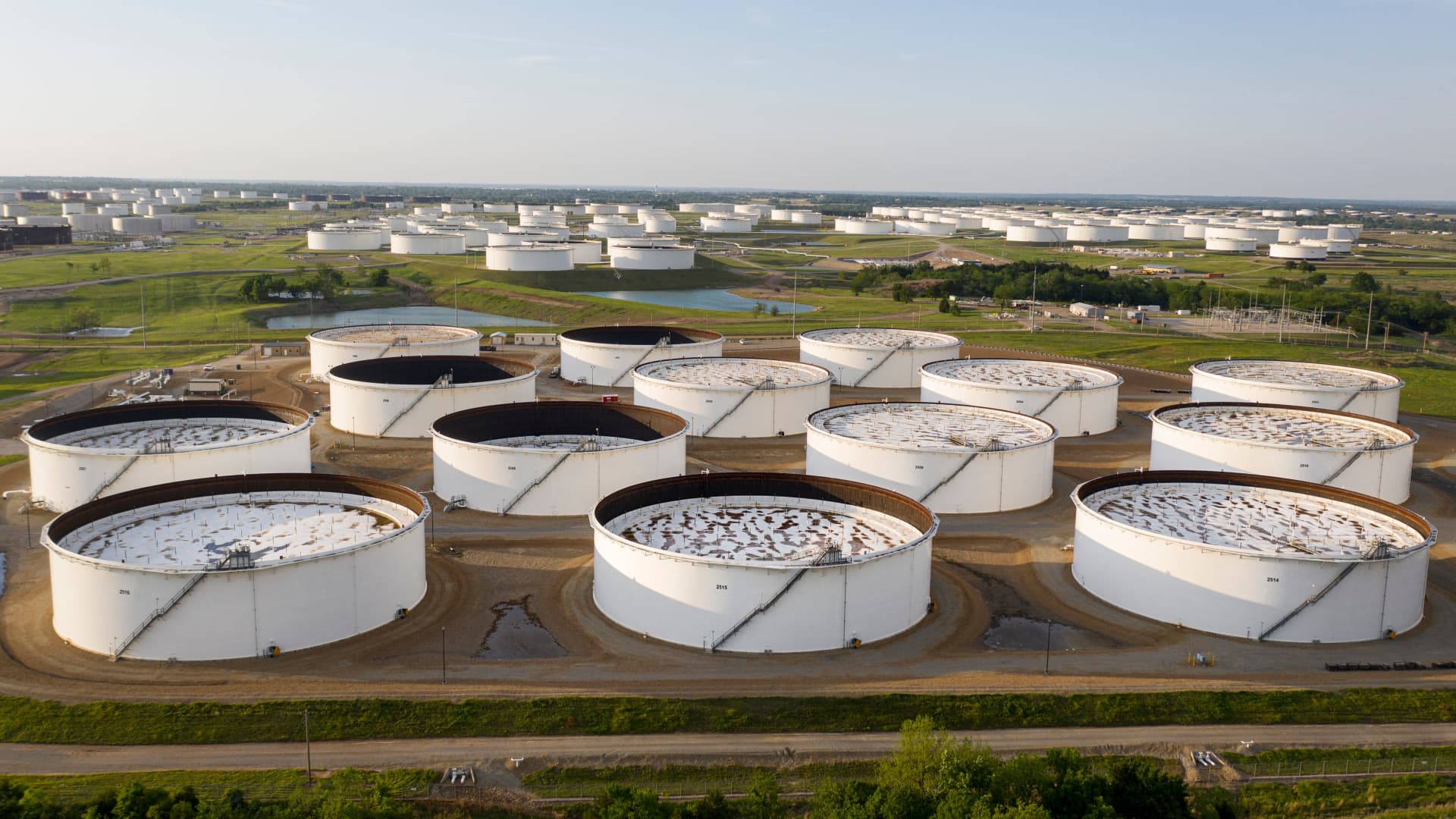U.S. crude oil prices fall 5% as supply grows amid demand worries

An aerial view of a crude oil storage facility is seen on May 4, 2020 in Cushing, Oklahoma.
Johannes Eisele | Afp | Getty Images
U.S. crude prices fell 5% on Thursday as inventories rose while industrial production fell.
The West Texas Intermediate December contract fell $3.76, or 4.9%, to settle at $72.90 a barrel, while the Brent January contract tumbled $3.76, or 4.63%, to settle at $77.42 a barrel. U.S. crude and the global benchmark hit their lowest level since early July.
U.S. crude inventories rose by 3.6 million barrels last week while production held steady at a record 13.2 million barrels per day, according to data released by the Energy Information Agency Wednesday.
And U.S. industrial production fell by 0.6% in October as the United Auto Workers strike impacted motor vehicle output, according to data released by the Federal Reserve on Thursday.
Phil Flynn, an oil expert with the Price Futures Group, said slower industrial production combined with increased supply are playing into the slowing demand theory. Prices are now having a hard time finding support because bears are controlling the market, he said.
In China, meanwhile, crude refining throughput slowed 2.8% in October to the equivalent of 15.1 million barrels per day from a record high in September, according to data from the National Bureau of Statistics, suggesting slowing demand in world’s second-largest economy.
The impact that China’s economic reopening after the pandemic had on oil prices is fading, said Jim Burkhard, president of S&P Global Commodity Insights. At the same time, the U.S. is producing more oil than any country has in history not to mention production in Canada, Brazil and Guyana, Burkhard said.
There is also the seasonal impact of demand typically slowing in the winter, he said. “When you have strong wave of non-OPEC+ supply growth and a seasonal decline in demand it leads to a situation like this,” Burkhard said.
The Organization of Petroleum Exporting Countries, on the other hand, has blamed speculators for the recent drop in prices, dismissing negative sentiment as exaggerated.
OPEC said China’s crude imports remain healthy, rising by 11.4 million barrels per day in October. The organization also pointed to strong U.S. economic growth in the third quarter and noted that the International Monetary Fund expects China’s economy to grow by 5.4% this year.
“Despite the above healthy and supportive market fundamentals, oil prices have trended lower in recent weeks, mainly driven by financial market speculators,” the organization said in its monthly report.
Flynn said hedge funds are heavily short on oil futures right now and are driving the market lower. “The market right now is more of a money game than a fundamentals game,” he said.
How OPEC reacts at its Nov. 26 meeting is key, Flynn said: “OPEC still believes speculators are driving the market so it’ll be interesting to see if they can engineer something to stop the free fall,” he said.